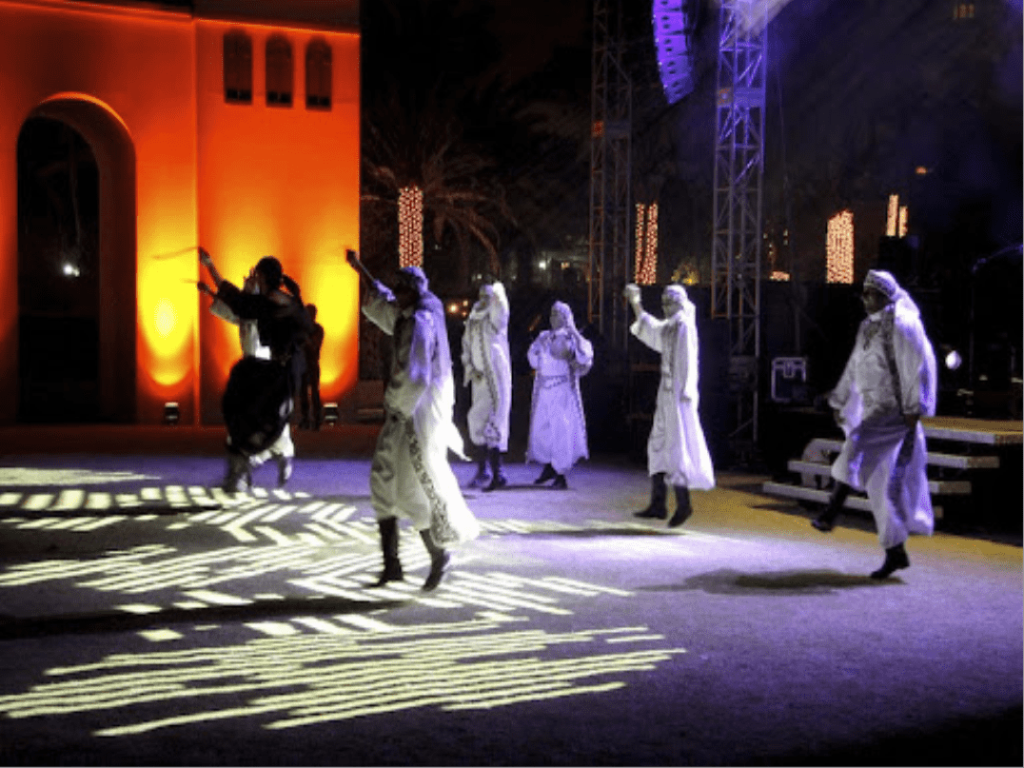Have you ever heard of the Zaffa? If you are interested in Arab wedding traditions, this word is essential. The Zaffa is not just an event. It’s a grand opening ceremony for Arab weddings. This vibrant procession announces the arrival of the newlyweds. It’s a key cultural moment. The couple is presented to their guests for the very first time. In this article, we will delve into the true Zaffa meaning. We will also explore its historical roots. Finally, we will show how this dynamic tradition has adapted to different Arab cultures.
What does the word “Zaffa” mean?
The word “Zaffa” comes from the Arabic root zaffa. It literally means “to escort” or “to send off.” The term describes the festive procession that escorts the bride and groom. They are led into the wedding hall. This moment is full of excitement and energy. Family and friends form a celebratory crowd. They officially begin the wedding feast. The Zaffa serves as a public declaration of the marriage. It is a joyous welcome to the newlyweds.
Origins and Components of the Zaffa Ceremony
The Zaffa ceremony’s origins can be traced back to ancient practices. A bride was escorted from her family’s home. She was led to her new marital home. Today, it has evolved. It is now a highly choreographed event. It serves as a centerpiece of Arab marriage traditions. A typical Zaffa includes several key components. They work together to create a powerful sensory experience.
- Musicians: The heart of the Zaffa is its music. A live band creates a rich and loud sound. This isn’t just background music. The rhythmic, pulsing beat dictates the pace. It fills the entire space with excitement. The band often consists of drummers and brass instrument players.
- Dancers: Professional dancers sometimes perform. They come from a folkloric dance troupe. Their routines are an intricate visual spectacle. Some dancers carry shamadan. These are large, ornate candelabras. They are balanced on their heads. Others might use swords or canes in their movements. This adds a dramatic flair to the celebration.
- Family and Guests: Family members and friends are central to the procession. They surround the couple. They clap in unison to the music. Women perform ululations (zagharit). This high-pitched sound expresses their happiness. It also welcomes the newlyweds.
Zaffa’s Cultural Variations in the Arab World
The Zaffa is a unifying tradition. However, its execution varies widely. This reflects unique regional customs.
- Egypt: The Egyptian Zaffa is famous for its high-energy and lively atmosphere. It often incorporates popular shaabi music. The fast-paced beat encourages guests to clap along. The bride and groom enter surrounded by a vibrant crowd. This makes it a very communal experience.
- The Levant (Syria, Lebanon, Jordan, Palestine): In the Levant, the Zaffa is a grand affair. It often includes the traditional Dabke dance. This is a powerful folkloric line dance. Guests join hands and stomp their feet in rhythm. The Dabke represents community and solidarity. Its inclusion symbolizes the two families uniting as one.
- The Arabian Gulf: Zaffas in the Gulf region can be more formal and stately. The procession might feature traditional al-ardha dances, a sword dance performed by men, and often includes the reciting of traditional poetry (sh’ar) and songs that praise the families of the bride and groom.
Experts’ Insights: Scott Marcus and Kamel Bahlol
For a deeper understanding, we can turn to experts. They include ethnomusicologists like Scott Marcus. Another is professional musician Kamel Bahlol. In their expert analysis, they highlight that the Zaffa is a symbolic ritual. Scott Marcus describes it eloquently. He calls it “a musical journey for the bride and groom from two different worlds into a shared one.” He emphasizes how the music and movement facilitate a profound transition. According to Kamel Bahlol, the Zaffa is “an expression of collective joy.” It brings the two families together. Their perspectives show that the Zaffa is far more than entertainment. It is a profound cultural statement.
The Zaffa in the Modern Era
Today, the Zaffa remains a vital part of Arab weddings. But it’s also a tradition that is constantly evolving. Many couples choose to honor the traditional elements. Others incorporate modern twists. This reflects their personal style. This can include:
- Musical Blends: They mix traditional Zaffa music. They also use popular modern Arabic songs. Even Western pop and R&B tracks are included.
- Creative Choreography: Couples might hire professional dancers. They create a unique, choreographed entrance for them. The dance combines traditional and modern styles.
- Themed Entrances:Some couples opt for more extravagant entrances. They match their wedding’s theme. They incorporate light shows, special effects, and cinematic backdrops.
This ongoing adaptation ensures the Zaffa’s future. It continues to be a vibrant and meaningful part of Arab marriage traditions. This will continue for generations to come.
Conclusion
The Zaffa is more than just a procession. This tradition is a celebration of love, a powerful expression of cultural identity, and a profound symbol of unity. It offers a perfect window into the joyous spirit of the Arab world. If you are learning Arabic, understanding these traditions will give you a deeper and more authentic appreciation for the rich Arab culture. For more helpful lessons like this, and to master the language and its cultural nuances, download the Kaleela Arabic learning app today!



